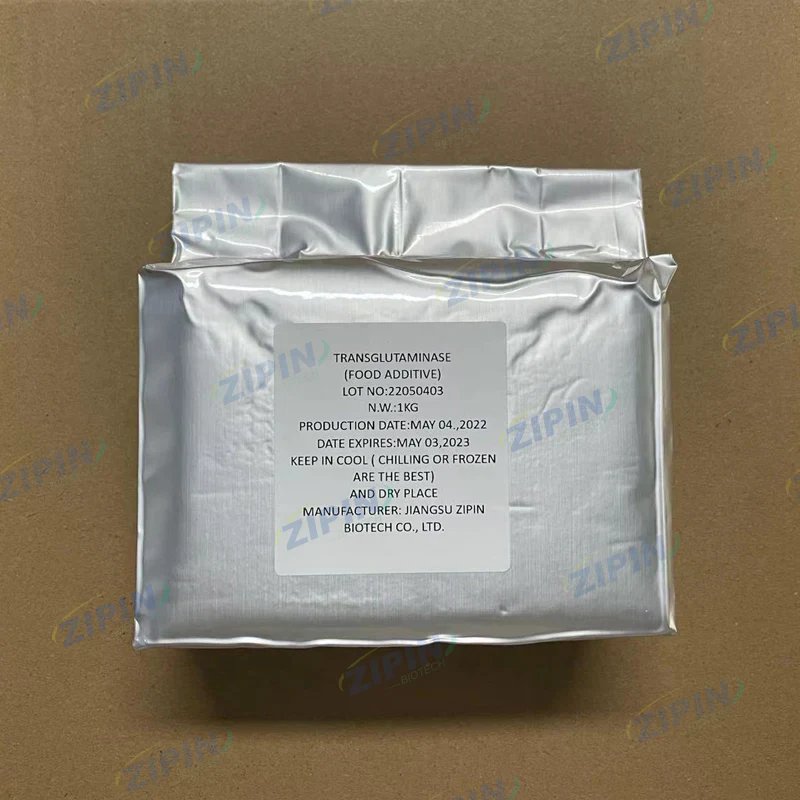Transglutaminase: The Enzyme Transforming Food and Industry
2024-08-16
Transglutaminase, often referred to as the "meat glue," is an enzyme with remarkable versatility and applications across various fields. From its role in the food industry to its potential in medical and biotechnological applications, transglutaminase is a powerful tool that transforms both ingredients and processes. In this blog, we will explore what transglutaminase is, its applications, benefits, and future potential in different industries.
1. What is Transglutaminase?
Transglutaminase (TGase) is an enzyme that catalyzes the formation of covalent bonds between proteins, specifically cross-linking glutamine and lysine residues. This enzyme is found naturally in various organisms, including bacteria, plants, and animals. Its primary function is to facilitate the cross-linking of proteins, which can affect the texture, stability, and functionality of the proteins involved.
In the food industry, transglutaminase is used to bind proteins together, enhancing the texture and appearance of various food products. It is commonly used in meat processing to create products with improved texture and consistency, but its applications extend far beyond just meat products.
2. Applications in the Food Industry
Transglutaminase has revolutionized the food industry by offering innovative solutions for texture modification, product enhancement, and cost efficiency:
- Meat Processing: One of the most well-known uses of transglutaminase is in meat processing. It is used to bind smaller pieces of meat together to create larger, uniform cuts. This application is often seen in products like formed steaks, chicken nuggets, and processed meat products. By improving the texture and appearance of meat, transglutaminase helps to enhance the overall quality of the final product.
- Dairy Products: In the dairy industry, transglutaminase is used to improve the texture of cheese and yogurt. It helps to create a more cohesive and smooth texture in products like cheese spreads and processed cheeses, enhancing their mouthfeel and stability.
- Baked Goods: Transglutaminase is also used in baking to improve the texture and structure of bread and other baked goods. It can enhance dough consistency, leading to improved crumb structure and shelf life of baked products.
- Vegetarian and Vegan Products: For plant-based and vegetarian products, transglutaminase is used to mimic the texture of meat and create plant-based meat alternatives. By binding plant proteins together, it helps to achieve a texture similar to traditional meat products.
3. Benefits of Transglutaminase
The use of transglutaminase offers several advantages for both manufacturers and consumers:
- Improved Texture: Transglutaminase enhances the texture of various food products by creating a more uniform and cohesive structure. This results in products that are more appealing and consistent in quality.
- Reduced Waste: By binding smaller pieces of meat or other ingredients together, transglutaminase helps to reduce waste and increase the yield of processed products. This can lead to cost savings for manufacturers.
- Enhanced Product Quality: The enzyme improves the overall quality of food products by enhancing their texture, appearance, and stability. This can lead to higher consumer satisfaction and better market competitiveness.
- Innovation in Product Development: Transglutaminase allows for the creation of novel food products and textures that were previously difficult or impossible to achieve. This opens up new possibilities for product innovation in the food industry.
4. Applications Beyond Food
While transglutaminase is widely known for its role in the food industry, its applications extend to other fields as well:
- Medical and Biotechnological Applications: In the medical and biotechnological fields, transglutaminase is used in tissue engineering and wound healing. The enzyme’s ability to cross-link proteins is utilized to create scaffolds for tissue regeneration and to improve the healing of wounds.
- Pharmaceutical Industry: Transglutaminase is used in the pharmaceutical industry for the production of drug delivery systems and to enhance the stability and bioavailability of certain medications.
- Cosmetic Industry: In cosmetics, transglutaminase is used to improve the texture and stability of skincare products. It helps to create products with better consistency and enhanced performance.
5. Considerations and Challenges
Despite its many benefits, there are some considerations and challenges associated with the use of transglutaminase:
- Regulatory Approval: The use of transglutaminase in food products is subject to regulatory approval in different countries. Manufacturers must ensure that they comply with local regulations and standards.
- Allergenic Potential: Some individuals may have allergic reactions to transglutaminase or its by-products. It is important for manufacturers to clearly label products containing transglutaminase and to conduct appropriate safety assessments.
- Cost: The cost of transglutaminase can be a consideration for manufacturers, especially in large-scale production. However, the benefits in terms of product quality and waste reduction often outweigh the costs.
6. Future Directions and Innovations
The potential of transglutaminase is far from fully realized. Future research and development are likely to focus on:
- Enhanced Enzyme Formulations: Developing new formulations and optimized versions of transglutaminase to improve its efficiency, stability, and performance in various applications.
- Sustainable Practices: Exploring sustainable and eco-friendly production methods for transglutaminase to minimize environmental impact and improve overall sustainability.
- Expanded Applications: Investigating new and innovative applications for transglutaminase in emerging fields, such as regenerative medicine, advanced biotechnology, and personalized nutrition.
In conclusion, transglutaminase is a versatile and powerful enzyme with a wide range of applications across the food industry and beyond. Its ability to enhance texture, improve product quality, and reduce waste makes it a valuable tool for manufacturers and consumers alike. As research and technology continue to advance, the potential of transglutaminase will expand, offering new possibilities for innovation and improvement in various fields. Embrace the transformative power of transglutaminase and discover how this remarkable enzyme can contribute to a better and more sustainable future.



